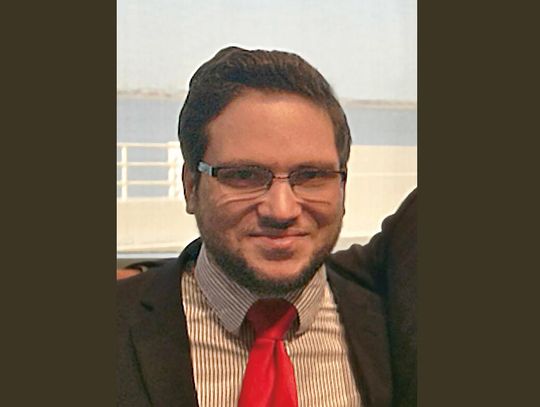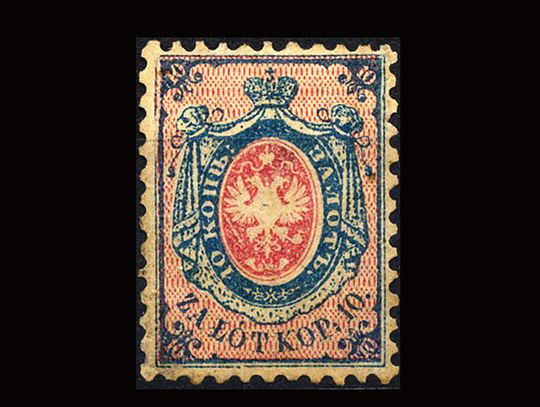The Warsaw Institute Foundation to pierwszy polski geopolityczny think tank w Stanach Zjednoczonych. Strategicznym celem tej organizacji jest wzmocnienie polskich interesów w USA przy jednoczesnym wspieraniu unikalnego sojuszu między dwoma narodami. Jej działalność koncentruje się na takich zagadnieniach jak geopolityka, porządek międzynarodowy, polityka historyczna, energetyka i bezpieczeństwo militarne. The Warsaw Institute Foundation została założona w 2018 roku i jest niezależną organizacją non-profit, inspirowaną bliźniaczą organizacją działającą w Polsce – Warsaw Institute. The Warsaw Institute Foundation is Poland's first geopolitical think tank in the United States. The strategic goal of this organisation is to bolster Polish interests in the U.S. while supporting the unique alliance between the two nations. Its activity focuses on such issues as geopolitics, international order, historical policy, energy, and military security. Established in 2018, The Warsaw Institute Foundation is an independent, non-profit organization inspired the twin Poland-based Warsaw Institute.
W wielu obszarach nadchodzące miesiące będą miały kluczowe znaczenie. Nie tylko dla losów Amerykanów, ale też dla całego świata, wyjątkowo ważne będą rezultaty wyborów prezydenckich w USA, które przesądzą o kontynuacji lub radykalnej zmiany polityki Waszyngtonu tak w wymiarze wewnętrznym jak i zagranicznym. Na środkowoeuropejskim regionalnym poziomie rok 2020 będzie kluczowy dla Inicjatywy Trójmorza, projektu zainaugurowanego przez prezydenta RP Andrzeja Dudę i prezydent Chorwacji Kolindę Grabar-Kitarović podczas szczytu w Dubrowniku w 2016 roku.
Dlaczego te dwa nadchodzące wydarzenia tak odmienne w swoich wymiarach i znaczeniu możemy postawić w jednym szeregu? Wbrew pozorom mają kilka wspólnych mianowników i są ze sobą powiązane. Inicjatywa Trójmorza wkraczać będzie bowiem w wyjątkową fazę. Po latach formowania nowego projektu regionalnego, od nieformalnych spotkań głów państw środkowoeuropejskich, do uzgodnień listy konkretnych inwestycji w infrastrukturę, powinniśmy zaobserwować w najbliższych miesiącach realizację pierwszych projektów. Będzie to o tyle ważne, że cała inicjatywa oparta jest o wspólne przekonanie, że państwa środkowoeuropejskie są zapóźnione infrastrukturalnie, energetycznie i cyfrowo w porównaniu do Europy Zachodniej. Inicjatywa Trójmorza (z wyjątkiem Austrii) obejmuje nowe państwa członkowskie Unii Europejskiej, dla których pierwsze lata bycia we wspólnocie były przede wszystkim poświęcone budowaniu relacji z Brukselą i innymi najważniejszymi stolicami zachodnioeuropejskimi, często kosztem współpracy regionalnej. Do dziś brakuje bezpośrednich połączeń kolejowych z Warszawy do państw bałtyckich, ale też nie ma nawet pociągu, który by łączył Warszawę z Bratysławą bez konieczności przejazdu przez Czechy. Podróż samochodem z Tallina nad Morze Czarne to często wyzwanie, gdyż o wiele szybciej i wygodniej dojedzie się do Paryża niż Bukaresztu. Przez pierwsze lata członkostwa państw postkomunistycznych w UE udało się zmodernizować infrastrukturę komunikacyjną na linii Wschód-Zachód, na to też były przeznaczane duże środki z budżetu wspólnotowego. Ale projekty na linii Północ-Południe nie mogły liczyć na tak hojne dofinansowanie, czego najlepszą ilustracją była historia walki o zdobycie funduszy europejskich na budowę drogi Via Carpatia biegnącej wzdłuż wschodniej granicy UE, zakończona sukcesem dopiero w 2019 roku.
W tych warunkach konieczne było nadanie nowego, silnego impulsu promującego współpracę państw w regionie środkowoeuropejskim i czymś takim ma szanse być właśnie Inicjatywa Trójmorza. Ale ani Polska, ani tym bardziej Chorwacja nie mają w UE wystarczająco silnej pozycji, by móc zagwarantować sukces dla swojego nowego pomysłu. Próba uruchomienia autorskiego i autonomicznego (wobec instytucji europejskich) nowego mechanizmu współpracy w regionie nie spotkała się z aplauzem w stolicach zachodnioeuropejskich. Inicjatywa Trójmorza narusza bowiem europejskie status quo, które obowiązywało od 2004 roku. Dotychczasowa praktyka polegała na biernej absorpcji unijnych rozwiązań systemowych i prawnych, czasem nawet narzucanych argumentem siły nowym państwom członkowskim, jak decyzja o kwotowym rozdziale uchodźców w 2015 roku. Jedynym lokalnym ugrupowaniem aktywnie obecnym w regionie do szczytu w Dubrowniku była Grupa Wyszehradzka, ale została utworzona na długo przed wejściem pierwszych państw postkomunistycznych do UE, bo działała już od 1991 roku.
Inicjatywa Trójmorza ma szansę pokazać, że nowe państwa członkowskie potrafią wyjść z propozycją, do której skutecznie zaczynają przekonywać innych partnerów. Warto przypomnieć, że na pierwszym inaugurującym szczycie w Dubrowniku w 2016 r. najsilniejszą delegację spoza regionu przysłali Chińczycy i Turcy. Pekin i Ankarę reprezentowali wiceministrowie spraw zagranicznych Liu Haixing i Ahmet Yildziz. USA było reprezentowane na o wiele niższym poziomie przez pracownika Departamentu Stanu z wydziału europejskiego i azjatyckiego – Hoyta Brian Yee. Dopiero administracja prezydenta Donalda Trumpa zrozumiała, że Inicjatywa Trójmorza może okazać się sposobnością do poważniejszego zaznaczenia amerykańskiej obecności w Europie Środkowej. W innym przypadku groziło, że to miejsce zajmą inwestujący w regionie Chińczycy lub chcący odbudować mocarstwową pozycję Turcy. Dlatego szczyt warszawski inicjatywy w 2017 r., na który przyjechał prezydent Trump, okazał się wielkim wydarzeniem politycznym skupiającym uwagę mediów z całego świata. Amerykański gość wysłał jasny sygnał, że Europa Środkowa jest ważnym regionem na mapie Waszyngtonu, który może stać się znaczącym odbiorcą gazu skroplonego czy partnerem biznesowym przy innych projektach. Dodatkowo amerykańskie zainteresowanie zmobilizowało do większej aktywności instytucje unijne, co skutkowało obecnością szefa Komisji Europejskiej na następnych szczytach Inicjatywy Trójmorza. Nawet Niemcy, wcześniej w lekceważącym tonie wypowiadający się o całym projekcie, nagle słowami ministra spraw zagranicznych Heiko Massa zadeklarowali tożsamość środkowoeuropejską i chęć przystąpienia do Inicjatywy Trójmorza. Ale jest jeden warunek konieczny do spełnienia, by projekt można było za parę lat ogłosić sukcesem wszystkich zaangażowanych. Tym wymogiem jest gotowość amerykańska do zaangażowania inwestycyjnego w regionalne projekty, bo brak kapitału jest jeszcze jednym wspólnym mianownikiem państw środkowoeuropejskich, który w znacznym stopniu ogranicza konkurencyjność regionu wobec gospodarek zachodnioeuropejskich. Nie oznacza to konieczności całościowego finansowania najważniejszych inwestycji przez kapitał amerykański, bo po stronie państw inicjatywy jest gotowość udziału i angażowania własnych środków, czego sygnałem jest utworzony w 2019 r. Fundusz Trójmorza, do którego przystąpiło już sześć z dwunastu zaangażowanych w projekt państw. Ale przy coraz mniejszym budżecie UE na politykę spójności, bez dodatkowych amerykańskich inwestycji część z planowanych projektów pozostanie w sferze marzeń. Dlatego rok 2020 będzie tak ważnym po obu stronach Atlantyku.
Piotr Bajda
prof. UKSW, dr hab., od 2007 r. wykładowca Uniwersytetu Kardynała Stefana Wyszyńskiego, w latach 2006-2013 pracownik naukowy Instytutu Studiów Politycznych PAN. W latach 2000-2004 był wicedyrektorem Instytutu Polskiego w Bratysławie; od 2005 do 2009 r. pracował w Ośrodku Studiów Wschodnich, w latach 2013-2016 był przedstawicielem Międzynarodowego Funduszu Wyszehradzkiego na Polskę.
The Warsaw Institute Foundation to pierwszy polski geopolityczny think tank w Stanach Zjednoczonych. Strategicznym celem tej organizacji jest wzmocnienie polskich interesów w USA przy jednoczesnym wspieraniu unikalnego sojuszu między dwoma narodami. Jej działalność koncentruje się na takich zagadnieniach jak geopolityka, porządek międzynarodowy, polityka historyczna, energetyka i bezpieczeństwo militarne. The Warsaw Institute Foundation została założona w 2018 roku i jest niezależną organizacją non-profit, inspirowaną bliźniaczą organizacją działającą w Polsce – Warsaw Institute. The Warsaw Institute Foundation is Poland's first geopolitical think tank in the United States. The strategic goal of this organisation is to bolster Polish interests in the U.S. while supporting the unique alliance between the two nations. Its activity focuses on such issues as geopolitics, international order, historical policy, energy, and military security. Established in 2018, The Warsaw Institute Foundation is an independent, non-profit organization inspired the twin Poland-based Warsaw Institute.
The Warsaw Institute Foundation to pierwszy polski geopolityczny think tank w Stanach Zjednoczonych. Strategicznym celem tej organizacji jest wzmocnienie polskich interesów w USA przy jednoczesnym wspieraniu unikalnego sojuszu między dwoma narodami. Jej działalność koncentruje się na takich zagadnieniach jak geopolityka, porządek międzynarodowy, polityka historyczna, energetyka i bezpieczeństwo militarne. The Warsaw Institute Foundation została założona w 2018 roku i jest niezależną organizacją non-profit, inspirowaną bliźniaczą organizacją działającą w Polsce – Warsaw Institute. The Warsaw Institute Foundation is Poland's first geopolitical think tank in the United States. The strategic goal of this organisation is to bolster Polish interests in the U.S. while supporting the unique alliance between the two nations. Its activity focuses on such issues as geopolitics, international order, historical policy, energy, and military security. Established in 2018, The Warsaw Institute Foundation is an independent, non-profit organization inspired the twin Poland-based Warsaw Institute.
Więcej o autorze / autorach:
Reklama











